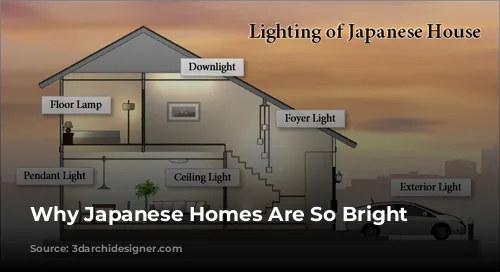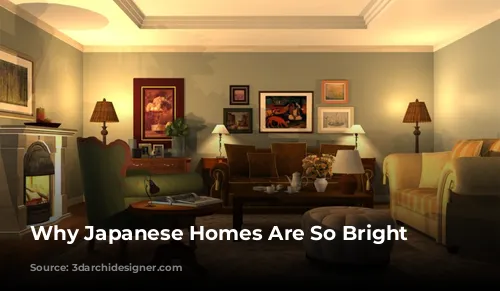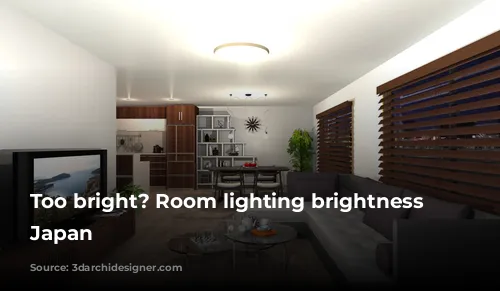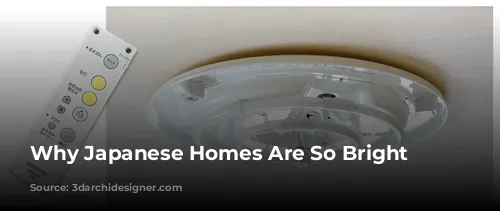Have you ever noticed how peaceful and calming European homes feel? It’s likely the antique furniture, the history that surrounds them, or perhaps even the soft lighting that creates such a tranquil atmosphere.
It’s interesting to compare this to Japan, where bright lighting seems to be the norm. While many overseas travelers find the lighting in Japanese homes to be overwhelming, we, as Japanese people, hardly notice it.
But why is Japanese lighting so bright?

The Brightness of Japanese Homes
According to Japanese Industrial Standards (JIS), office lighting should be over 750 lux, which is quite bright. While other countries also have brightly lit offices, in Japan, even residential lighting is incredibly intense.
So what’s the reason for this preference?
Studies suggest that Asian people with darker pupils are less sensitive to brightness compared to people with lighter pupils, like those found in Caucasian individuals. This explains why North Americans and Europeans prefer warmer, dimmer lights in their homes. Japanese people, however, tend to use daylight white or daylight color bulbs, which create a much brighter environment.

Lighting Styles and History
Let’s explore the unique aspects of Japanese lighting fixtures. The most popular type is the ceiling light. During construction, special sockets are installed in the center of the ceiling, ready for you to plug in your light fixture.
These ceiling lights are often very bright, illuminating the entire room with direct light. Light switches, typically located by the door, provide easy control. Some even come with pull-string operation, remote controls, timers, and dimming functions, offering greater flexibility and even serving as a security measure.
The popularity of bright ceiling lights stems from several factors.
During Japan’s post-World War II economic boom, owning a home was a symbol of success. A clever lighting company capitalized on this desire, promoting fluorescent lights with the catchy slogan: “Brightness is a symbol of wealth.” This message resonated deeply with the Japanese people.
Another factor is the belief that brighter light is better for your eyesight. Many parents instill in their children that reading under bright light is essential for healthy vision. This has led to a widespread acceptance of intense lighting in homes.

Shifting Towards Softness?
While bright ceiling lights remain popular, there’s a growing trend toward embracing softer lighting in Japan. People are starting to view lighting as more than just a functional tool – it’s becoming a part of interior design, a way to create atmosphere. Indirect lighting with warmer tones is gaining popularity, creating a more relaxed and inviting ambiance.
Even though bright ceiling lights still reign supreme, many people find themselves drawn to the softly lit spaces they see in interior design magazines and advertisements. They dream of living in those beautifully styled homes with their tranquil lighting, but the bright ceiling light in their own homes remains a familiar and enduring feature of Japanese culture.


